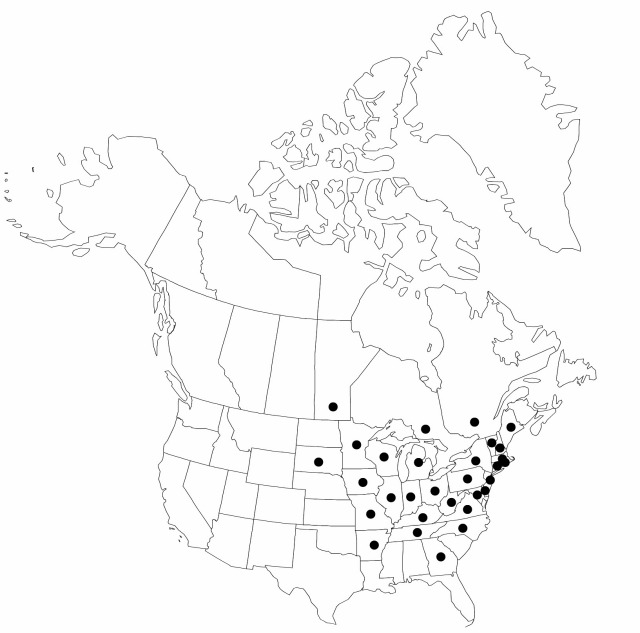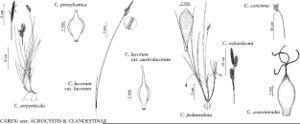Difference between revisions of "Carex pensylvanica"
in J. Lamarck et al., Encyl. 3: 388. 1792.
FNA>Volume Importer |
imported>Volume Importer |
||
| (3 intermediate revisions by 2 users not shown) | |||
| Line 1: | Line 1: | ||
{{Treatment/ID | {{Treatment/ID | ||
|accepted_name=Carex pensylvanica | |accepted_name=Carex pensylvanica | ||
| − | |accepted_authority=Lamarck | + | |accepted_authority=Lamarck |
|publications={{Treatment/Publication | |publications={{Treatment/Publication | ||
|title=in J. Lamarck et al., Encyl. | |title=in J. Lamarck et al., Encyl. | ||
| Line 8: | Line 8: | ||
}} | }} | ||
|common_names=Carex de Pennsylvanie | |common_names=Carex de Pennsylvanie | ||
| + | |special_status={{Treatment/ID/Special_status | ||
| + | |code=F | ||
| + | |label=Illustrated | ||
| + | }}{{Treatment/ID/Special_status | ||
| + | |code=E | ||
| + | |label=Endemic | ||
| + | }} | ||
|basionyms= | |basionyms= | ||
|synonyms= | |synonyms= | ||
| Line 32: | Line 39: | ||
-->{{#Taxon: | -->{{#Taxon: | ||
name=Carex pensylvanica | name=Carex pensylvanica | ||
| − | + | |authority=Lamarck | |
| − | |authority=Lamarck | ||
|rank=species | |rank=species | ||
|parent rank=section | |parent rank=section | ||
| Line 46: | Line 52: | ||
|publication title=in J. Lamarck et al., Encyl. | |publication title=in J. Lamarck et al., Encyl. | ||
|publication year=1792 | |publication year=1792 | ||
| − | |special status= | + | |special status=Illustrated;Endemic |
| − | |source xml=https:// | + | |source xml=https://bitbucket.org/aafc-mbb/fna-data-curation/src/2e0870ddd59836b60bcf96646a41e87ea5a5943a/coarse_grained_fna_xml/V23/V23_1030.xml |
|genus=Carex | |genus=Carex | ||
|section=Carex sect. Acrocystis | |section=Carex sect. Acrocystis | ||
Latest revision as of 21:38, 5 November 2020
Plants loosely cespitose; rhizomes horizontally spreading, reddish brown to dark brown, (10–)40–100 mm, slender. Culms 10–45 cm, smooth to weakly scabrous distally; bases (remnants of old leaves) slightly fibrous. Leaf blades green, 0.5–3.6 mm wide, herbaceous, papillose to scabrous abaxially, papillose to scabrous adaxially, blades of distal cauline leaves well developed. Inflorescences usually with both staminate and pistillate spikes; peduncles of staminate spikes 0.1–7.5 mm; proximal cauline bracts leaflike, usually shorter than inflorescences. Spikes: proximal pistillate spikes 1–3(–4) (basal spikes 0, rarely 1); cauline spikes overlapping or separated, with (3–)4–13 perigynia; staminate spikes 8–24 × 1.3–4 mm. Scales: pistillate scales dark reddish brown, with narrow white margins, ovate, 2–4 × 1.3–2.8 mm, equaling perigynium body, apex obtuse or acute to acuminate; staminate scales elliptic to ovate, 2.9–5.3 × 1.1–1.9 mm, apex obtuse or acute to acuminate. Anthers 1.8–4 mm. Perigynia pale green, veinless, obovoid, 2.2–3.4 × 1.1–1.5(–1.7) mm; beak straight, pale green, 0.5–0.9 mm, weakly ciliate-serrulate, apical teeth 0.1–0.4 mm. Stigmas 3. Achenes dark brown, obovoid, obtusely trigonous in cross section, 1.3–2.3 × 0.9–1.4(–1.6) mm. 2n = 36.
Phenology: Fruiting early May–late Jul.
Habitat: Well-drained, acidic but cation-rich, sandy, rocky, and loamy soils under hardwood forest canopies, forest edges, savannas, “balds” and in rocky or sandy openings
Elevation: 150–1500 m
Distribution

Man., Ont., Que., Ark., Conn., Del., Ga., Ill., Ind., Iowa, Ky., Maine, Md., Mass., Mich., Minn., Mo., N.H., N.J., N.Y., N.C., Ohio, Pa., R.I., S.Dak., Tenn., Vt., Va., W.Va., Wis.
Discussion
Selected References
None.
